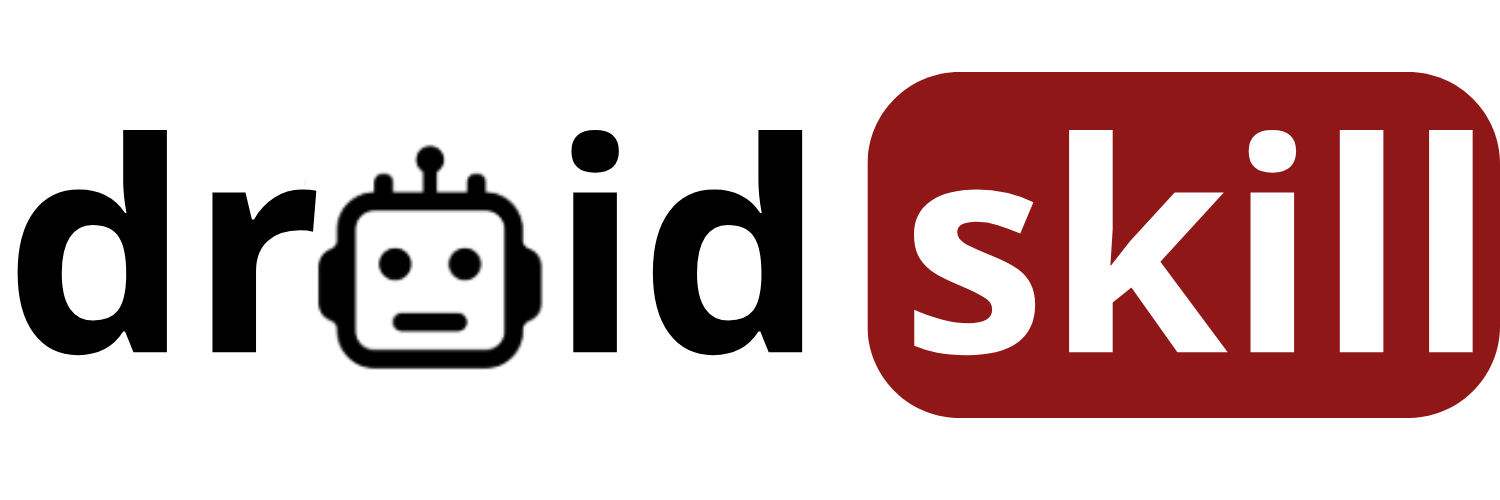Hey Android enthusiasts! Ever found yourself in a situation where you needed to transfer data between two Android phones quickly and efficiently? Or perhaps you're just looking for ways to manage your health better using your smartphone? Well, you've come to the right place! This guide will walk you through the ins and outs of USB phone-to-phone data transfer and introduce you to some fantastic health-focused apps available on the Google Play Store. Let's dive in!
USB Phone-to-Phone Data Transfer: A Comprehensive Guide
Transferring data between two Android phones via USB is a straightforward process, but it's essential to understand the steps involved to ensure a smooth and successful transfer. Here's a detailed breakdown:
1. Understanding USB Transfer Modes: Before connecting your phones, it's crucial to understand the different USB transfer modes available. The most common modes are:
- Media Transfer Protocol (MTP): This mode allows you to transfer media files like photos, videos, and music between your phone and computer (or another phone). It's generally the most compatible mode.
- Picture Transfer Protocol (PTP): This mode is specifically designed for transferring photos. It's often used when connecting your phone to a camera or photo editing software.
- USB Mass Storage (UMS): This mode, while older, treats your phone's storage like an external hard drive. It's less common on newer Android devices.
- Charging Only: This mode simply charges your phone without allowing any data transfer.
2. Connecting Your Phones:
You'll need a USB cable that's compatible with both of your phones. Most modern Android phones use USB-C, but older devices might use Micro-USB. Once you have the correct cable, connect both phones to each other.
3. Selecting the Correct USB Mode:
After connecting the phones, you'll likely see a notification on each phone asking you to choose a USB mode. Select MTP (Media Transfer Protocol) on both devices. If you don't see the notification, you might need to pull down the notification shade and tap on the USB connection option to change the mode.
4. Accessing the Phone Storage:
Once both phones are in MTP mode, they should appear as connected devices on each other. You can then browse the file system of each phone and copy files between them. You can use a file manager app on either phone to navigate the folders and transfer the desired data.
5. Transferring Data:
Now you can copy and paste files between the phones. Simply locate the files you want to transfer, select them, and copy them to the desired location on the other phone. The transfer speed will depend on the USB version and the size of the files.
6. Safely Disconnecting:
Once the transfer is complete, it's essential to safely disconnect the phones. On some devices, you might need to eject the phone from the file manager before disconnecting the USB cable. This helps prevent data corruption.
Troubleshooting Common Issues:
- Phone Not Recognized: If your phone isn't recognized, try a different USB cable or port. Also, make sure you have the necessary USB drivers installed on your computer (if applicable).
- Slow Transfer Speeds: Slow transfer speeds can be caused by a faulty USB cable, a slow storage device, or a large number of small files. Try transferring larger files in batches.
- Connection Issues: Ensure that both phones are unlocked and that the USB mode is correctly selected.
Beyond Basic Data Transfer: Exploring Advanced Options
While USB data transfer is a reliable method, there are other options available for transferring data between Android phones, especially for larger files or when you don't have a USB cable handy.
- Cloud Storage: Services like Google Drive, Dropbox, and OneDrive allow you to upload files from one phone and download them to another. This is a convenient option for transferring files wirelessly.
- Wi-Fi Direct: This feature allows you to connect two devices directly over Wi-Fi without needing a router. It's faster than Bluetooth and can be used to transfer large files quickly.
- Third-Party Apps: Apps like SHAREit and Xender are designed specifically for transferring files between devices quickly and easily. They often use Wi-Fi Direct or similar technologies.
Now, let's shift our focus to health and wellness!
Top Android Apps for Health and Wellness
Your Android phone can be a powerful tool for managing your health and well-being. Here are some of the best health-focused apps available on the Google Play Store:
1. MyFitnessPal
MyFitnessPal is a comprehensive app for tracking your diet and exercise. It allows you to log your meals, track your calorie intake, and monitor your macronutrient breakdown. It also integrates with various fitness trackers and apps to provide a holistic view of your health.
With its extensive food database and barcode scanner, logging your meals is quick and easy. The app also provides personalized insights and recommendations to help you achieve your fitness goals. Whether you're trying to lose weight, gain muscle, or simply eat healthier, MyFitnessPal can be a valuable tool.
Download MyFitnessPal from the Play StoreSearch MyFitnessPal on Play Store
2. Headspace
Headspace is a popular meditation and mindfulness app that offers guided meditations for various purposes, such as stress reduction, sleep improvement, and focus enhancement. It's perfect for beginners and experienced meditators alike.
The app features a library of meditations led by experienced instructors, as well as animations and articles to help you understand the principles of mindfulness. Headspace can help you reduce stress, improve your sleep, and cultivate a greater sense of well-being. Even just a few minutes of meditation each day can make a significant difference in your mental health.
Download Headspace from the Play StoreSearch Headspace on Play Store
3. Calm
Similar to Headspace, Calm is another excellent meditation and mindfulness app. It offers a wide range of guided meditations, sleep stories, and relaxing music to help you manage stress, improve sleep, and enhance your overall well-being.
Calm features meditations for various topics, such as anxiety, gratitude, and self-esteem. The app also includes nature scenes and ambient sounds to create a relaxing atmosphere. Whether you're looking to reduce stress, improve your sleep, or simply find a moment of peace, Calm can be a valuable resource.
Download Calm from the Play StoreSearch Calm on Play Store
4. Google Fit
Google Fit is a fitness tracking app developed by Google. It uses your phone's sensors to track your activity levels, such as steps taken, distance traveled, and calories burned. It also integrates with other fitness trackers and apps to provide a comprehensive view of your fitness data.
Google Fit allows you to set goals, track your progress, and earn achievements. It also provides insights and recommendations to help you stay motivated and achieve your fitness goals. The app is simple to use and integrates seamlessly with other Google services.
Download Google Fit from the Play StoreSearch Google Fit on Play Store
5. Sleep Cycle
Sleep Cycle is a sleep tracking app that analyzes your sleep patterns and wakes you up at the optimal time in your sleep cycle. It uses your phone's microphone to detect your movements and sounds during the night, providing insights into your sleep quality.
The app generates detailed sleep reports, showing you how long you slept, how much time you spent in each sleep stage, and any disturbances you experienced. Sleep Cycle can help you understand your sleep patterns and make adjustments to improve your sleep quality. Waking up at the optimal time can leave you feeling more refreshed and energized.
Download Sleep Cycle from the Play StoreSearch Sleep Cycle on Play Store
Tips for Choosing the Right Health App:
- Identify Your Needs: What specific health goals are you trying to achieve? Are you looking to track your diet, manage stress, improve sleep, or increase your activity levels?
- Read Reviews: Check out user reviews on the Google Play Store to get an idea of the app's usability, features, and reliability.
- Consider Integration: Does the app integrate with other fitness trackers or apps that you already use?
- Look for Personalization: Does the app offer personalized insights and recommendations based on your individual needs and goals?
- Try Free Trials: Many health apps offer free trials or limited versions. Take advantage of these to try out the app before committing to a subscription.
The Importance of Data Privacy:
When using health apps, it's essential to be aware of data privacy. Many of these apps collect sensitive information about your health and lifestyle. Before using an app, review its privacy policy to understand how your data will be used and protected. Choose apps from reputable developers with a strong track record of data security.
Integrating Technology into Your Health Routine:
Technology can be a powerful tool for improving your health and well-being. By using the right apps and devices, you can track your progress, stay motivated, and make informed decisions about your health. However, it's important to remember that technology is just one piece of the puzzle. It's also essential to maintain a healthy lifestyle through proper diet, regular exercise, and stress management.
Conclusion:
Whether you're transferring data between Android phones or managing your health with the help of apps, technology can make your life easier and more efficient. By understanding the steps involved in USB data transfer and exploring the various health apps available on the Google Play Store, you can leverage the power of your Android phone to achieve your goals. Remember to prioritize data privacy and choose apps that align with your individual needs and preferences. Stay healthy and stay connected!
Bonus Tip: Backing Up Your Data
Before transferring data between phones or making any significant changes to your device, it's always a good idea to back up your data. This will protect you in case something goes wrong during the transfer process. You can back up your data to Google Drive, a computer, or an external storage device.
Staying Updated with the Latest Android Tips and Tricks
The world of Android is constantly evolving, with new features and updates being released regularly. To stay informed about the latest tips and tricks, be sure to subscribe to our blog and follow us on social media. We'll keep you updated on everything you need to know to get the most out of your Android device.
Disclaimer:
The information provided in this article is for general informational purposes only and does not constitute medical advice. Always consult with a qualified healthcare professional for any health concerns or before making any decisions related to your health or treatment.


